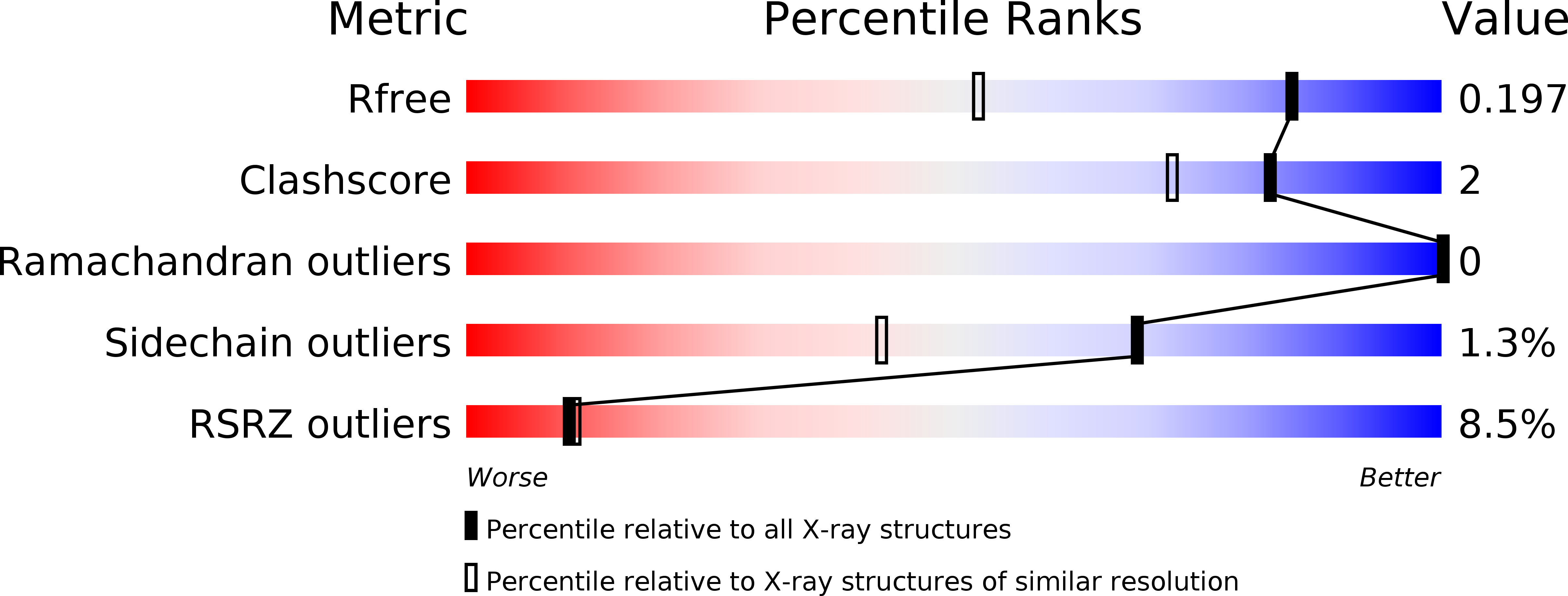
Deposition Date
2014-02-27
Release Date
2015-01-21
Last Version Date
2024-03-20
Entry Detail
PDB ID:
3WRO
Keywords:
Title:
Minute virus of mice non-structural protein-1N-terminal nuclease domain reveals a unique Zn2+ coordination in the active site pocket and shows a novel mode of DNA recognition at the origin of replication
Biological Source:
Source Organism:
Murine minute virus (Taxon ID: 648235)
Host Organism:
Method Details:
Experimental Method:
Resolution:
1.48 Å
R-Value Free:
0.19
R-Value Work:
0.17
R-Value Observed:
0.17
Space Group:
P 21 21 2


